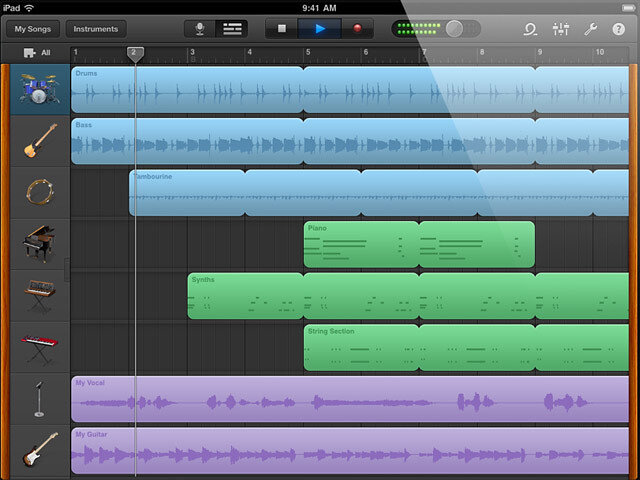Sound Effects Activity
Here is a sound-only activity that students can assemble and learn about storytelling through sound along with the basics of sound design, editing, and mixing.
The idea is to tell a 1-minute story using only sound effects. For the best results, don't let them use any human voice, i.e. no recognizable words. With my classes I do accept non-verbal sounds such as grunts, sighs, and so forth. Also, the project is more challenging when you don't allow using music either. This way the project is all about sound effects and how they can be used to convey a coherent story.
You may also want to dissuade them from telling their classmates what their story is about. This way when you play their projects back in class, everyone can guess the story and how effectively it was conveyed.
Software
This is a low-cost/no-cost project. Obviously, you need access to computers with soundcards and headphones. You also need some audio software. One choice is Audacity, the freeware (PC/Mac) program. Mac users may already have GarageBand available, which works well for this assignment.
Sound Effects
Your students will need a lot of different sound effects so they can fully realize their stories. There are many commercial sources for sound effects on the Web. Some of these sites offer free samples, too. For instance, though Soundsnap is a subscription service, you can download five free sound effects each month. There are also several free sources that use Creative Commons licensing.
Free
www.findsounds.com
www.freesound.org
www.freesfx.co.uk
www.soundsnap.com
Paid
www.blastwavefx.com
www.hollywoodedge.com
www.sonomic.com
www.sounddogs.com
If you have recording equipment available, you could encourage students to acquire many of their own sound effects, too. A portable recorder, such as the Zoom H4n (www.zoom.co.jp/english/products/h4n), could be invaluable for this and other audio/video classroom projects.
Stories
What kinds of stories work best? I avoid playing other examples as that seems to unduly influence some students. They tend to copy the examples instead of coming up with their own original ideas. Help them be more creative by talking about a scenario and how they might approach it sound-wise. For example, they could do a story about getting up in the morning and getting ready for school. Talk through all the elements that could make this work. For example:
Birds chirping in the background
Alarm goes off
A defeated sigh
Turn off alarm
Roll back covers and slide off bed
Put on slippers and walk across room and open door
You get the idea …
You may want to have them script the story before they begin the actual work.
Technical
The basics of using a program like Audacity or GarageBand are beyond the scope of this article. There are plenty of tutorials on the Web for either of these software choices. However, one issue that students must be careful with is volume. As they add many sound effects together for their stories, they risk having volume gets so high that it distorts and sounds bad. You need to show them how to control the volume levels and prevent this from happening with the software that you choose to use.
Rubric
I use four primary goals for evaluation. One, how effectively they conveyed the story. Two, how their sound selections work together to improve the content, support it, and help the story. Three, how the overall mix elements create a dense, well-balanced soundscape with good levels, clarity, and interesting and original ideas. And four, that there is no volume distortion or clipping at all.
Playback
Once students create their stories, have them export the projects as single stereo files. Play these back during class and talk about the stories, how well their sound choices presented and supported the idea, review technical issues, and generally foster a productive discussion.
This basic activity can really offer a solid foundation on which to build other audio projects. The skills your students learn here can be applied to more sophisticated audio and video soundtrack work.
Meet the Author, Jeffrey Fisher
Jeffrey P. Fisher has taught film/video/TV to middle and high school students. At other times he's either teaching his college courses or running his own audio/video company. Get more information about him at www.jeffreypfisher.com.


